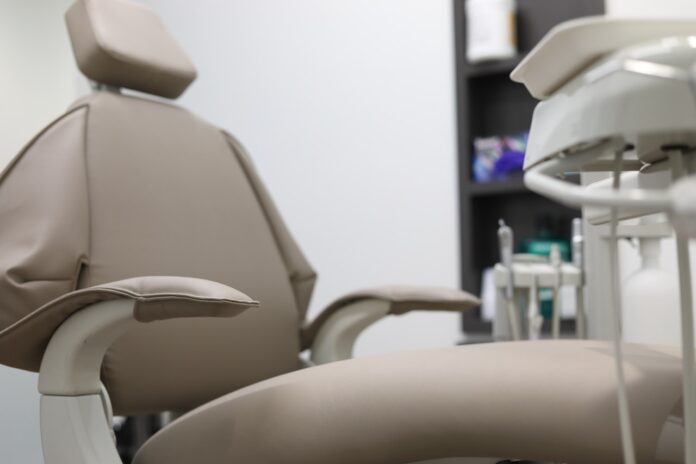For any healthcare practice, exam tables are an essential piece of equipment. These tables provide a stable surface for patients to lie down on during a medical examination, and they allow doctors and nurses to carry out whatever procedures are necessary in a safe and hygienic environment.
While some practices may think that exam tables are an unnecessary expense, investing in high-quality tables can actually improve patient outcomes, speed up average appointment times, and increase the overall efficiency of your practice.
Here are just five reasons why your healthcare practice needs exam tables and how they can benefit both your patients and your staff.
Enhancing Patient Comfort
One of the primary reasons why healthcare practices need exam tables is to ensure patient comfort. A high-quality exam table is designed to provide optimal support and cushioning so that patients can feel at ease during their appointments. These tables often feature adjustable headrests, armrests, and leg rests, which enable healthcare professionals to position patients comfortably for various examinations. This can be particularly important for patients who are elderly, disabled, or have limited mobility, as it can be difficult for them to climb onto a traditional examination bed.
By prioritizing patient comfort, healthcare practices can foster positive experiences and promote a sense of trust and satisfaction during medical appointments. Exam tables aren’t the only way to achieve these aims, but they can be one of the most important investments for a well-equipped doctor’s office.
Facilitating Efficient Examinations
Exam tables are versatile tools that facilitate efficient examinations and procedures. They are equipped with various features that enable healthcare professionals to perform thorough assessments, diagnoses, and treatments.
For example, you need to look for medical exam tables for sale that have built-in storage drawers or cabinets that allow healthcare providers to keep essential equipment and supplies within reach. Additionally, many exam tables have adjustable backrests, which enable patients to be positioned in a reclined or upright position depending on the procedure being conducted. Such flexibility enhances the efficiency of healthcare practitioners and contributes to accurate diagnoses and effective treatments.
Ensuring Accessibility and Safety
Accessibility and safety are crucial aspects of any healthcare environment. Exam tables are designed to accommodate patients of different ages, sizes, and physical abilities. They offer features such as adjustable heights, wide surfaces, and sturdy constructions, making it easier for patients to get on and off the tables safely. Furthermore, exam tables often come equipped with side rails and grab bars that provide extra support for patients with mobility challenges.
By investing in exam tables that prioritize accessibility and safety, healthcare practices can ensure that all patients receive the care they need without compromising their well-being. The key is to find medical tables that come with these accessibility features already built into their frames. For example, you might look for tables that offer ambidextrous platforms and handles for healthcare professionals that are both right- and left-handed.
Supporting Infection Control Measures
Maintaining a clean and hygienic environment is of utmost importance in healthcare practices. Exam tables can play a significant role in supporting infection control measures.
High-quality exam tables, for example, are designed with materials that are easy to clean and sanitize. They’re often covered with antimicrobial or waterproof upholstery to help prevent the buildup of bacteria or other pathogens. Some exam tables also feature disposable, single-use covers that can be easily replaced between patient visits, further reducing the risk of cross-contamination.
By investing in exam tables that prioritize infection control, healthcare practices can safeguard the health and well-being of both patients and staff.
Enhancing Workflow and Space Optimization
Efficient workflow is essential for healthcare practices to maximize productivity. Exam tables can contribute to these goals by offering integrated features that enhance organization, save space, and improve workflow efficiency.
Many exam tables come equipped with integrated power outlets, USB ports, or data ports, allowing healthcare professionals to easily connect and use electronic devices during examinations. What’s more, exam tables can be made with built-in scales or imaging capabilities that will eliminate the need for additional equipment, streamlining the examination process and optimizing space utilization within the healthcare practice.
Conclusion
Exam tables are indispensable assets in any healthcare practice. They prioritize patient comfort, ensure accessibility and safety, facilitate efficient examinations and procedures, support infection control measures, and enhance workflow efficiency. By investing in high-quality exam tables, healthcare practices can provide a positive patient experience, improve operational efficiency, and deliver optimal care. Choosing the right exam table that suits the specific needs of the practice and its patients is a wise investment that can yield long-term results.
Read Also
- Creative Approaches to Alleviating Healthcare Staff ShortagesHospitals and clinics are facing staff shortages, which makes it harder to take care of patients well. Finding simple and useful solutions is very important. Easy changes like flexible work hours, good training, and chances to grow can help staff stay happy. Technology, like online doctor visits and helpful tools, can make work easier. Smart… Read more: Creative Approaches to Alleviating Healthcare Staff Shortages
- Understanding the Role of Sterilizers in Healthcare FacilitiesHave you ever wondered how hospitals keep their equipment safe enough to use on dozens of patients every day? Most people never think about what happens behind the scenes, yet these hidden steps play a huge role in patient safety. Sterilizers are part of that system, working quietly to remove harmful germs before any instrument… Read more: Understanding the Role of Sterilizers in Healthcare Facilities
- Building Healthcare Access Where It’s Needed Most: A Local First ApproachHealthcare shouldn’t depend on where you live. But in the U.S., it often does. If you’re in a big city, you likely have options. If you’re in a small town or an underserved neighbourhood, it’s a different story. To fix this, more healthcare leaders are turning to a local-first approach. That means putting clinics and… Read more: Building Healthcare Access Where It’s Needed Most: A Local First Approach
- Revolutionizing Patient Engagement: Innovative Solutions for Improved Care and Treatment SuccessNavigating healthcare system can often feel overwhelming for patients. Between appointments, prescriptions, and treatment regimens, it’s easy for crucial details to get lost in the shuffle. That’s why effective patient engagement and support solutions are more important than ever. Companies like Serva Health, with their pharma hub services, are stepping up to ensure that patients… Read more: Revolutionizing Patient Engagement: Innovative Solutions for Improved Care and Treatment Success
- On-Demand Healthcare Staffing As A Cost-Saving StrategyThis is an exciting and challenging time for the healthcare industry. Technology is advancing almost faster than humans can keep pace. New legislation is creating fresh challenges for the future of healthcare, and the shifting population demographic continues to place more pressure on healthcare facilities. Amidst these changes, healthcare facilities are facing a critical staffing… Read more: On-Demand Healthcare Staffing As A Cost-Saving Strategy
- The Benefits of Contract Labor Staffing in HealthcareThe most successful healthcare facilities today aren’t just reacting to crises—they are building workforce resilience to withstand them. Unpredictable patient demand, coupled with persistent nursing shortages, has made the traditional staffing model obsolete. Relying on mandatory overtime to cover a sudden surge in capacity is a recipe for high turnover and rising employee burnout relief… Read more: The Benefits of Contract Labor Staffing in Healthcare







